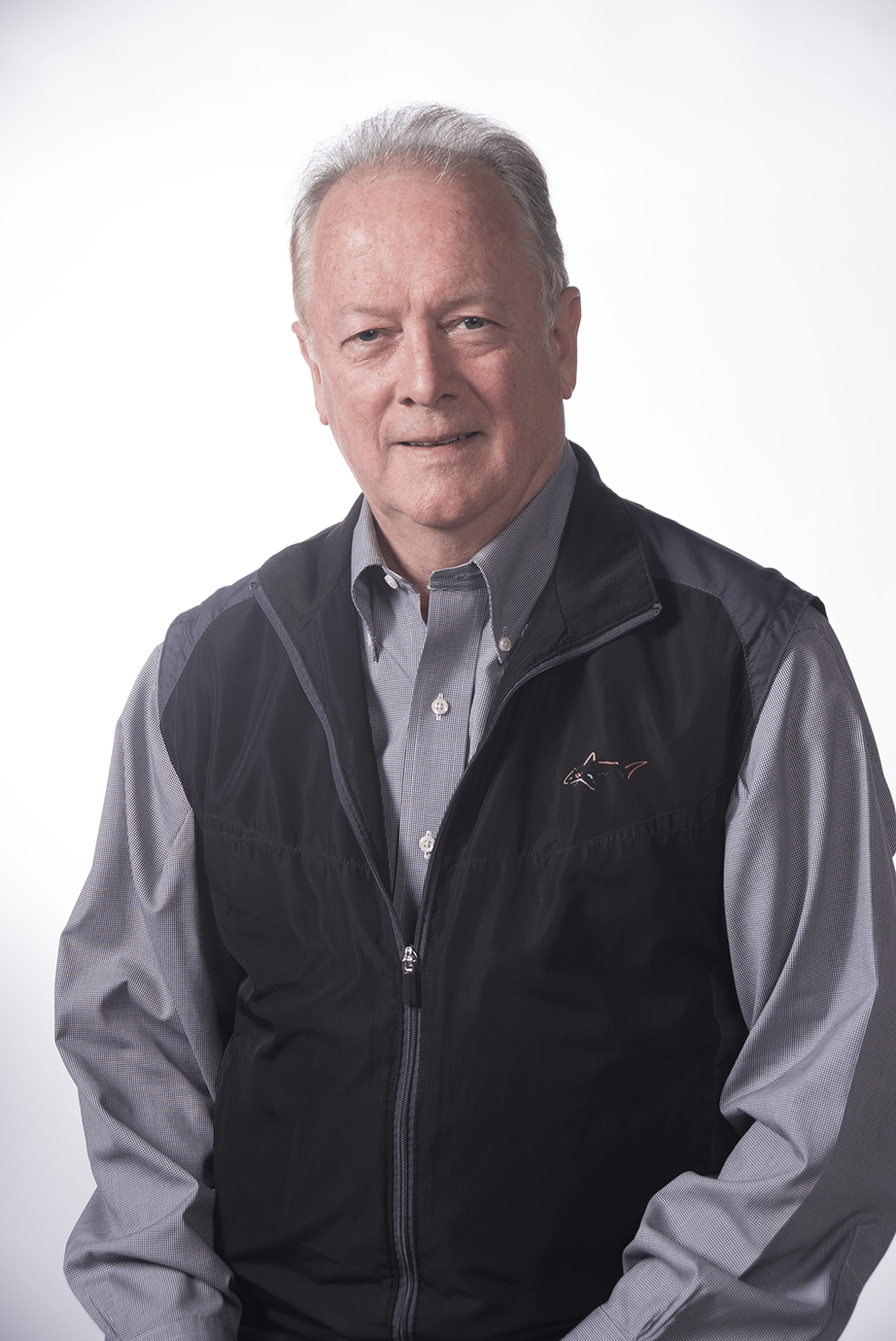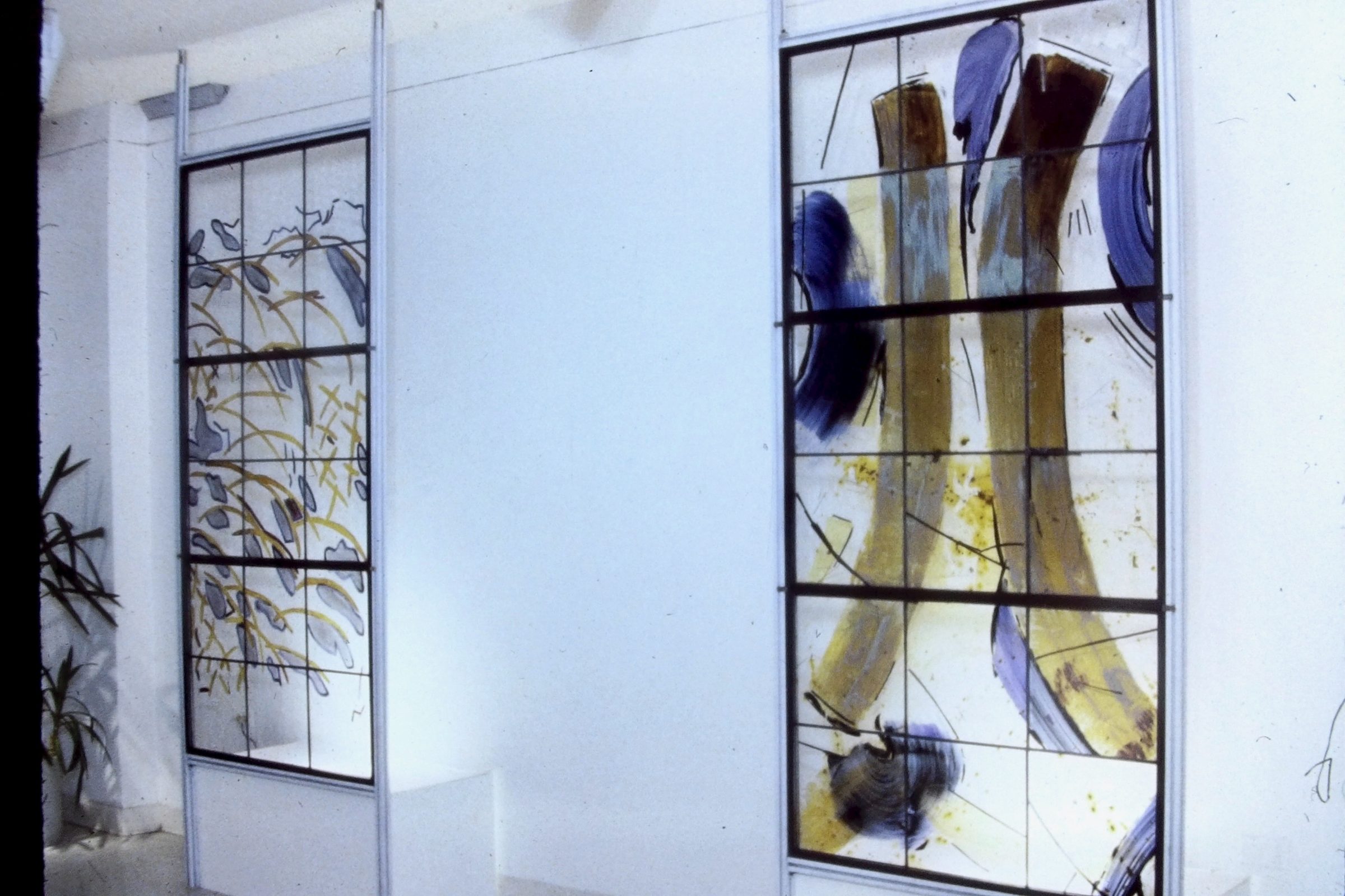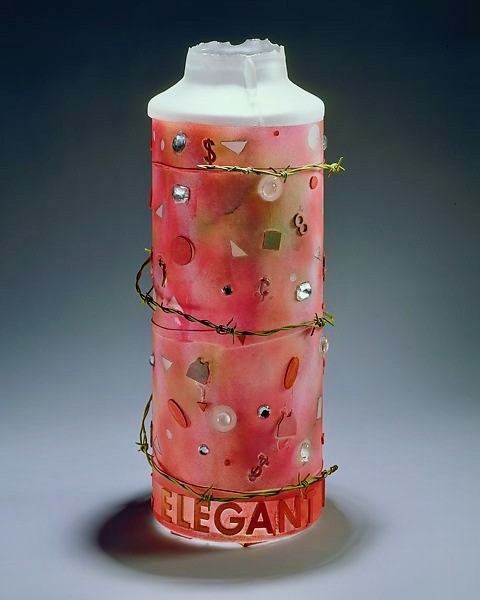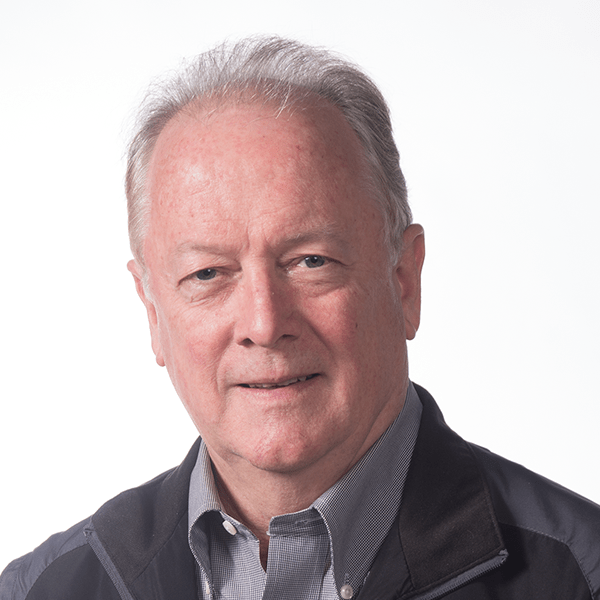
Image courtesy of Richard Yelle.
Richard Winifred Yelle
Glass artist and designer Richard Winifred Yelle earned his BFA in 1974 from the Massachusetts College of Art and Design and his MFA in 1976 from the Rhode Island School of Design, where he studied glass with Dale Chihuly. The following year, Yelle cofounded the New York Experimental Glass Workshop (later UrbanGlass) in New York City. In 1983 Yelle earned an MA in arts administration from New York University. Yelle first led the crafts program and later the Product Design Department at Parsons School of Design from 1986 to 1998. He stayed as a faculty member at Parson until 2005, when he joined the University of Bridgeport. Yelle is director of the Shintaro Akatsu School of Design at Bridgeport and remains on the board of directors at UrbanGlass.
Works

Panel, 1981. Leaded glass, high temp enamel. H: 72 in, W: 36 in. Image courtesy of Richard Yelle.

Yellow Window, 1982. Colorless thick plate glass with green tint; oil and wax; diamond-point engraved, acid-etched. Squarish shape with corners broken off, rough edges, diamond-point scratched lines, yellow paint outlines square in middle. Overall H: 34.1 cm, W: 33.4 cm. Collection of The Corning Museum of Glass, Corning, New York (83.4.39). Image courtesy of Richard Yelle.

Elegant, 1991. Glass, oil, wax, paint, graphite, and barbed wire. H: 22.75 in, D: 9.75 in. Collection of the Metropolitan Museum of Art, New York. Image courtesy of Richard Yelle. Gift of Mary and Gary Pforzheimer.
Media
Richard Yelle and Joe Upham, co-founders of New York Experimental Glass Workshop (now UrbanGlass), discuss their time together at MassArt, forming the Workshop at its first location on Great Jones Street in Manhattan, and their early public glassblowing demonstrations.

Richard Yelle discusses how he and Joe Upham put on public glass demonstrations in New York City.
02:37 TranscriptRichard Yelle discusses the 1992 Dale Chihuly/Lino Tagliapietra Venetian series demonstration at the Brooklyn location of NYEGW.
01:58 TranscriptRichard Yelle discusses learning Venetian techniques both from Americans who went to Venice and Venetians coming to the States.
0:49 TranscriptRichard Yelle talks about NYEGW’s first visiting glass artist, Patsy Novell, and first student, Bill Gudenrath.
02:31 TranscriptRichard Yelle discusses the history of NYEGW at Clayworks, including stories about Joe Upham, Bill Gudenrath, and Rose Slivka.
05:53 Transcript